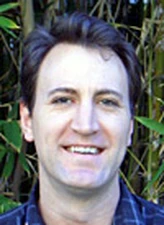Alfonso Saiz-Lopez

The 2008 Outstanding Young Scientist Award is awarded to Alfonso Saiz-Lopez for his ground-breaking research in the field of atmospheric chemistry.
Alfonso Saiz-Lopez has already made a huge impact in the field of atmospheric chemistry, only two years after the completion of his PhD in 2005. There can be very few people who have made major contributions in ground- and satellite-based observations, laboratory work and modelling, in such a short time. The general theme of his research is the atmospheric chemistry of iodine, to which he has made four outstanding contributions. These are now described in sequence.
First, Dr. Saiz-Lopez discovered that the biogenic emission of molecular iodine (I2) is probably the major source of iodine in the atmosphere. He observed I2 directly in the coastal marine boundary layer off western Ireland, using the technique of differential optical absorption spectroscopy. Until these observations it had been assumed that organic iodine species were the dominant source of iodine in the atmosphere and, since the concentrations of the photolabile iodo-carbons are always very low, that the impacts of iodine chemistry in the atmosphere were probably limited. However, I2 has now been observed in several different environments, including at a remote open ocean site. Another important aspect of I2 is that through its reaction with the nitrate radical, there is also an active iodine radical chemistry at night – first demonstrated by Dr. Saiz-Lopez.
Second, Dr. Saiz-Lopez showed that I2 emissions are high enough, certainly in some coastal locations, to generate huge fluxes of ultrafine aerosol particles. The I2 is converted photochemically into iodine oxide vapours, which are highly condensable. These particles are probably excellent condensation nuclei for other atmospheric constituents (organic acids, water vapour), which may provide a potentially important climate feedback.
Third, Dr. Saiz-Lopez undertook an 18-month study of halogen oxides in coastal Antarctica at Halley Station, a site on the Brund Ice Shelf operated by the British Antarctic Survey. He discovered high levels of the iodine oxide (IO) and bromine oxide (BrO) radicals, which were present throughout the sunlit part of the year from August through April. While the BrO was anticipated from satellite observations and previous work in the Arctic, the presence of very substantial IO concentrations was quite unexpected (IO has never been observed in the Arctic). During spring at Halley the IO reaches concentrations that have not been recorded anywhere else to date. These high levels of halogen oxides have major impacts on tropospheric ozone depletion, and dominate the oxidizing capacity of the boundary layer. This has major implications for the removal of mercury around Antarctica, and the oxidation of dimethyl sulphide which impacts on cloud formation and climate.
Fourth, Dr. Saiz-Lopez has made the first observations of the IO radical from a satellite, using the SCIAMACHY spectrometer on ENVISAT. These measurements confirm the extent of IO throughout coastal Antarctica, and show that the concentrations of this radical are even higher over the sea ice surrounding the continent.
Dr. Alfonso Saiz-Lopez has achieved this outstanding research record through his own many abilities, and through unselfish collaboration with a large number of people at universities and research institutes in Europe and the U.S.
